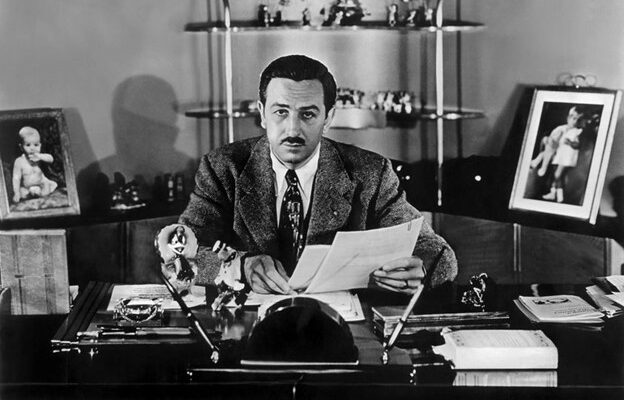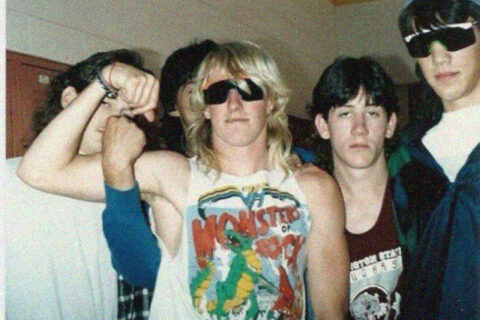Seeing the reaction from normies regarding Disney’s war on the state of Florida, for passing a commonsense bill designed to protect children, has been pretty fascinating. Many are taking it as a gut punch, in that they are finding out just how badly a company, one that they have spent thousands of dollars on, hates them. But this goes beyond “brand loyalty,” rather it’s one of betrayal. Traitors are typically thought of as worse than an open enemy. This is why Judas is usually viewed more harshly in Christian theology than Pontius Pilate. This is also why Benedict Arnold is seen in a more negative light than King George III. Dante placed traitors in the lower circle of Hell for a reason. Disney, a company that was presented for generations as the go-to place for the values of traditional America, has in the minds of many committed an act of betrayal. However, the truth is – none of this is new. Disney has been doing this for decades, since at least the 1990s. To understand why this happened requires an examination of history and, in doing so, we can understand how Disney was taken over, how this “regime change” altered their revival in the late 1980s, and influenced a generation of children throughout the West.
1966 is one of the most pivotal years in the history of film, and of Disney in particular. The year is important because almost overnight the type of films being made changed. In 1965, the highest grossing film of the year was The Sound of Music. The highest grossing film of the year in 1967 was The Graduate. It is very difficult to find a more dramatic shift in the history of film. The move from silent films to “talkies” comes close, but that was a shift driven by technological changes. The Revolution of 1965-1967 was caused by cultural changes. 1966 is also a significant year for Disney as that is the year Walt Disney died, and losing such a larger-than-life icon had a profound influence on the company. In response, the company adopted a mentality of “we need to do things the way Walt would have.” It was shortly after that Disney began to lose its cultural prominence, as the 1970s would see the company face dwindling profits, an era known as the “Disney Dark Age.” Remember, this was the era of New Hollywood, the era of The Godfather, Taxi Driver, and The Deer Hunter. Disney looked out of place.
The beginning of the era is generally agreed on as 1966 with the death of Walt Disney, but there is some debate over when it ended, with 1985, 1986, and 1988 all being listed as possible contenders. And, it was the end of the Disney Dark Age, and the new rise of the company, that brought us to where we are today. This event requires further examination as it is when Disney was ripped from its traditional foundation.
The usual narrative on the cause of the Disney Dark Age goes like this – after the death of Walt Disney, the company fossilized in its thinking and tried to keep making films like it was still the 1940s and 1950s, despite the massive cultural changes taking place in America, changes that made Disney increasingly irrelevant. In 1985, Michael Eisner took over the company and radically remade it. He broke the “Do as Walt would have” mentality and brought the company, kicking and screaming, into the post-1960s era. Naturally, it paid off with The Little Mermaid in 1989, and the Disney “Renaissance” would eventually span from 1989 to 1999.
Though superficially convincing, the traditional narrative has several problems. The biggest issue it has is that the decline Disney suffered from the late 1960s to the early 1980s has more to do with demographic trends outside of their control rather than any real decline in quality. The era saw the legalization of contraception and later abortion, which brought down the birthrate, bringing an end to the “baby boom” of the post-World War II period. Furthermore, this time period also had the Vietnam War, riots, and the end of the post-War boom and the beginning of the “meh” economy of the 1970s. All this meant that a great number of people, especially middle-class people, had fewer children, and less children meant that the bread-and-butter audience for Disney, families with small children, declined. So, of course Disney was going to suffer economically. Disney may have had some misfires during this time, but the Disney Dark Age cannot be considered a decline in quality. While researching this article, I was struck by how many of my favorite Disney films, The Rescuers, The Fox and the Hound, and Robin Hood, were all made during the so-called Dark Age.
Likewise, the Disney Renaissance of the late 1980s and 1990s was not so much due to Michael Eisner’s genius, but again due to demographic trends. As the turmoil of the late 1960s to early 1980s began to diminish, more people, especially the middle-class, stopped delaying having children. By 1989, this audience was now old enough to become regular moviegoers and their parents flocked to Disney. The fact that Disney, unlike every other studio, had not changed much in the 1970s, made them all the more appealing. I will even go as far as to say that a major reason why Disney held such sway over normies is because they held firm in the 1970s. In this view, Eisner is simply the guy in the right place at the right time.
Of course, I think Eisner knew that. He may be a wicked man, but he is not an unintelligent man. He knew that the new generation of youth would be larger, and, with that, Disney would come back. The trick would be to get in when the company hit rock bottom and then ride the revival, allowing him to get the credit. But there is more to this story than just an unscrupulous businessman. There was also a subversive element to all of this. He knew that there was a new and large generation of small children coming and their parents would trust Disney. In turn, the goal would be to introduce subversive elements into this new spat of films, thus influencing a new generation and their parents would go along with it because they had been taught to trust Disney. And, that brings us to the next part of this story.
I know that Disney always made changes to their adaptations. For one, literature and film are two different mediums. What works in a book may not work in a film. Plus, many of these stories, especially in their original version, would have been too graphic for children. And many times, the story was either too long or too short for a film. But what Disney never did was change the moral core of these adaptations. However, the films of the Disney Renaissance period did just that. A culture’s stories are important because they are a critical way to pass down their moral values. This is why children’s stories are of particular importance – because they function as a way to install morality into the youth. Thus, no healthy society can create children’s stories when the moral theme is to disobey parents. Doing so is a threat to the continuation of the society and its moral fabric. But, this is just what Disney did throughout the late 1980s and 1990s – as seen in The Little Mermaid, Aladdin, and Mulan. The Lion King is the most notable exception here, but this remains a constant theme throughout most of the Disney Renaissance. Your father might be a bigot (The Little Mermaid) or a bumbling fool (Aladdin), but the theme remains the same – you should ignore him. Contrast this to the stories that Disney was creating when children who disobeyed their parents were cast in a negative light and punished for it. Those were stories made by healthy societies.
At least some on the Right made note of what was going on, but sadly those protests fell on deaf ears. At least some of this was self-inflicted. In this excellent article by Mary Cuff, she lays out the long-term problems with Disney and how the Right failed to make any headway. Some of this was done by looking for secret messages- i.e. the supposed phallic nature of the castle in The Little Mermaid or a cloud of bugs spelling out “sex” in The Lion King. It created a lightning rod that made many on the Right look foolish, especially against the more overt “disobey your parents” messages prevalent throughout the era. Obviously, the Right was facing an uphill battle here. The media was going to focus on the stupidest things they could find and normies had it drilled into their empty heads that Disney was family friendly, and that was going to be hard to undo, but certain actors made it worse. The Dissident Right must keep this in mind in how we present ourselves in the future.
Remember that some of this was not actually a conspiracy theory. Ursula is based on an actual drag queen and Scar was intended to come off as a homosexual. Sure, they were villains, but Disney was still trying to push the envelope. And, this has had real world consequences. The rapid shift that the U.S., and the rest of the West, went through regarding homosexuality in the 2010s can be attributed to a generation raised on the Disney Renaissance of the 1990s. It would be silly to blame this exclusively on Disney, but it was a major factor in that shift. Dislike this all you want, but Disney matters and the Left knows this. This is why Roger Ebert argued against Song of the South getting a wide release because of the impact it might have on black kids. And, this is why Disney was targeted the way it was in the 1980s.
Keep in mind that none of this was necessary to save the company. Disney was delt a bad hand in the late 1960s, one of a demographic shift that was out of their control. There is a reason the vast majority of movies aimed at children in the 1970s were made cheaply, the audience was no longer there. But as the 1980s hit, that audience was coming back, along with their parents who had been raised on Disney. It was just a matter of time. The only question was if Disney would remain fundamentally the same company it had been, or if it would be different. Walt Disney was not perfect. As a son of Illinois, he looked at the War Between the States as a tragic brother war rather than a conflict of national liberation. But, he did not see it as a way in which the South could be, and should be, destroyed. The man worked to weed communist influence out of Hollywood and preserve traditional American values. Sadly, within a generation of his death, his company was now engaging in the same subversion he fought against. In terms of profit, none of it was needed. Eisner knew demographics were pushing Disney to make a comeback by the late 1980s. There was a bigger agenda at play, and its one we are still living with today.







“The man worked to weed communist influence out of Hollywood and preserve traditional American values”?
I’m not so sure. I’ve read that Walt was a 33rd degree mason who may accordingly have been very adept at just projecting such values.
Walt was a Yankee. Note the Disney movie “Million Dollar Deliverance”.
For the record
I was born at that time. Disney captured the imagination of my Mother to the point that she painted all the Disney Characters around the room my crib was in, and took me on pilgrimage to LA Disneyland when I was in a stroller.
Every Sunday evening in the 70s the network would play a Disney movie, wholesome ones for the most part. Other than the movies, I have never cared about the cartoon characters.
I do believe it was the start of globohomo, but now that Unforgiveness inc. has a monopoly control over it, expect defilement of our children.
May the Good Lord shower his Grace upon you Southerners always.
Jews took control of Disney and each CEO since has been a Jew.They hate Christ.Its that simple.And the numbers of children decreased but did not collapse.So way off base on that.American children were primed by the big 6 Jew motion picture companies to love garbage,its that simple.